In 1912, Wesleyan received a collection of these "Mexican Indian Antiques" from then-president William Arnold Shanklin. It includes stone carvings, pottery and numerous small finds from Azcapotzalco, then a suburb of the capital. Unfortunately, more precise contextual information on the objects was lost or not recorded - Niven had workers digging at multiple sites, with deposits spanning over 3500 years - but some can be broadly attributed based on comparison to published examples.
Artifacts from William Niven's Excavations Near Mexico City
-
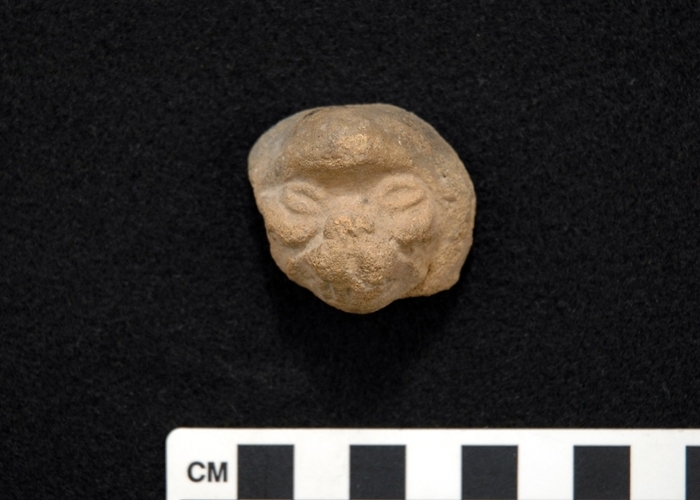
Terracotta Heads
1912.2324 series
Prior to 1521 CE
Niven and his crews found thousands of these little heads. The bulk of them were reportedly found in lower excavation levels, attributed to Archaic peoples who dwelt in the region ca. 2500-1500 BCE. However, clay figurines were reported in nearly all levels, so these objects may date anywhere from ca. 2500 BCE to 1521 CE, or perhaps more recently, as Niven was at one point accused of (unknowingly) passing on fakes that had been made by his workers!
Some of Wesleyan's heads are from standalone figurines; others appear to be decorations broken off vessels or other larger objects. The heads pictured at right and bottom left have traces of red paint, and are likely more recent than the other two. -
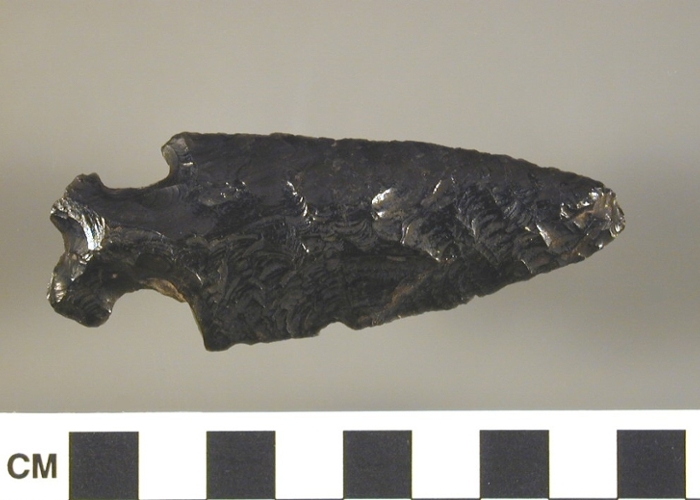
Obsidian Projectile Point
1912.2305.1
Unattributed
Prior to 1521 CE
Obsidian is ubiquitous at archaeological sites throughout Mesoamerica. This glassy green or black volcanic stone was likely valued for its appearance and ritual associations as well as its functional properties. Obsidian can be finely knapped into tools with a razor-sharp edge or ground and polished into a reflective surface. This point may have been used as a spear or knife, depending on how it was hafted. -
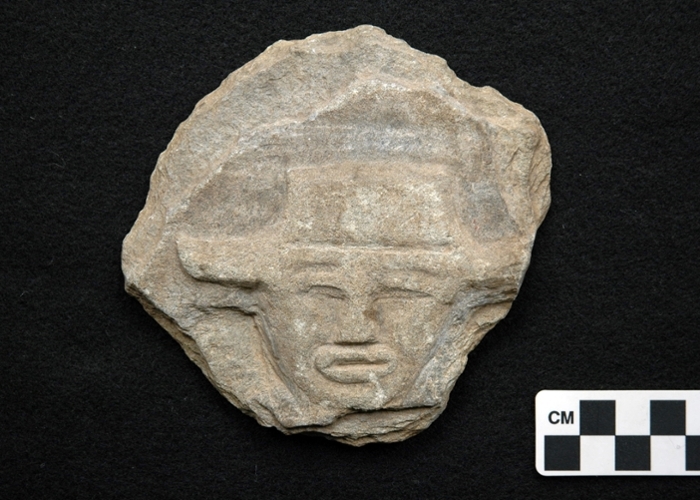
Stone Carving
1912.2303.1
Unattributed
Prior to 1521 CE
This human face, wearing some type of hat or headdress, is carved in low relief in grey stone, possibly mica schist. Based on anecdotal descriptions of Niven's excavations, such stone carvings are more likely to have originated from "Pre-Aztec" levels, so prior to 1200 CE, but the date range and attribution of these levels is unclear. -
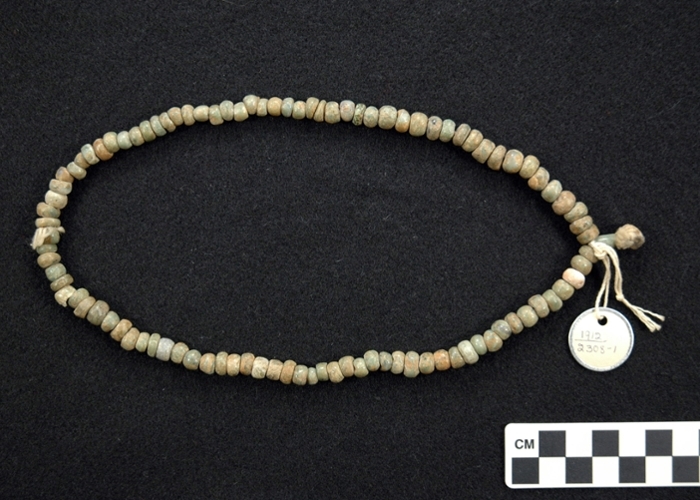
Stone Beads
1912.2308.1
Unattributed
Prior to 1521 CE
It is unknown if these beads were re-strung as they were found in situ, or, indeed, if they even came from the same context. Accessioned as "jade," they are probably made of jadeite, serpentine, and/or diorite.
Though beads like these were first carved by the Olmec ca. 1200 BCE, they were made or acquired by various successive cultures for centuries. Based on anecdotal descriptions of Niven's excavations, these beads are more likely to have originated from the uppermost "Aztec" levels, attributed to the various Nahuatl-speaking peoples who occupied Azcapotzalco from the late 12th or early 13th century until European conquest. -
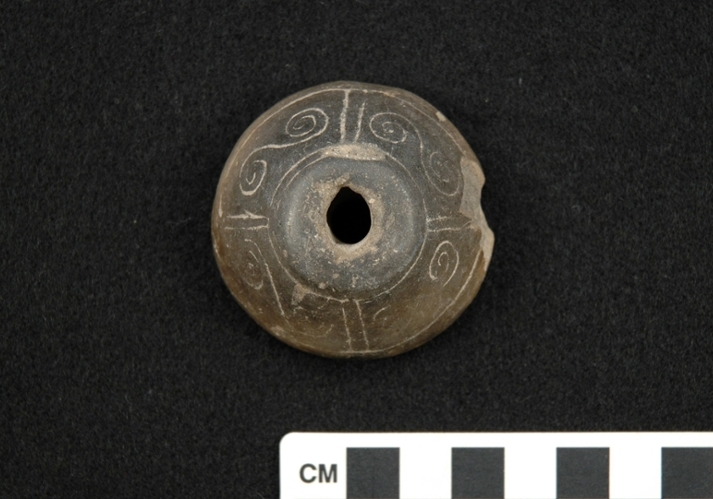
Spindle Whorls
1971.13.1
Probably Tepanec or Mexica (Aztec)
ca. 1200-1521 CE
Spindle whorls are a common archaeological find around the world and are still in use today. They are used to weight the spindle shaft in hand-spinning; they also act as a flywheel, keeping the rotational movement going.
These clay whorls are very similar to examples held by the American Museum of Natural History. They likely derive from Niven's uppermost excavation levels, attributed to the various Nahuatl-speaking peoples who occupied Azcapotzalco from the late 12th or early 13th century until European conquest. The uppermost example is mold-made; the lower two are incised (left) and incised and stamped (right). -
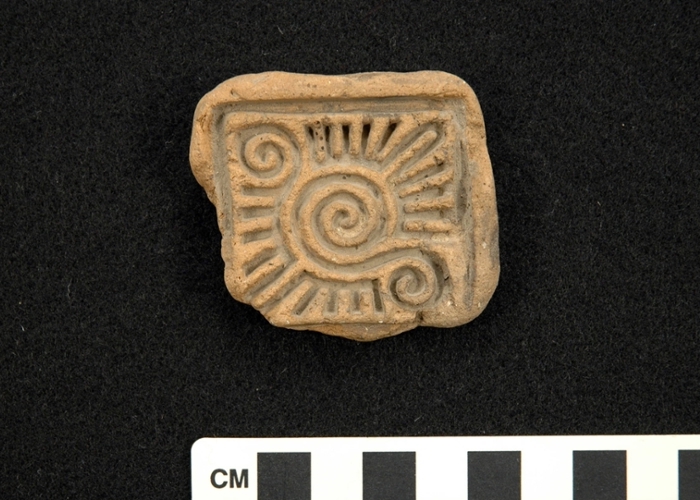
Stamp Mold Fragment
1912.2330.1
Probably Tepanec or Mexica (Aztec)
ca. 1200-1521 CE
Terracotta stamps featuring bold geometric designs and stylized animals are a common Mesoamerican find and are held by numerous museums. Initially hand-carved, they were later produced in molds like this one. The stamps may have been used for printing on textiles, bark paper, or even skin, in the manner of a temporary tattoo.
This fragment is likely one panel of a larger, multi-panel mold. In the Valley of Mexico, stamps and molds of this type are usually attributed to the Mexica (Aztec). -
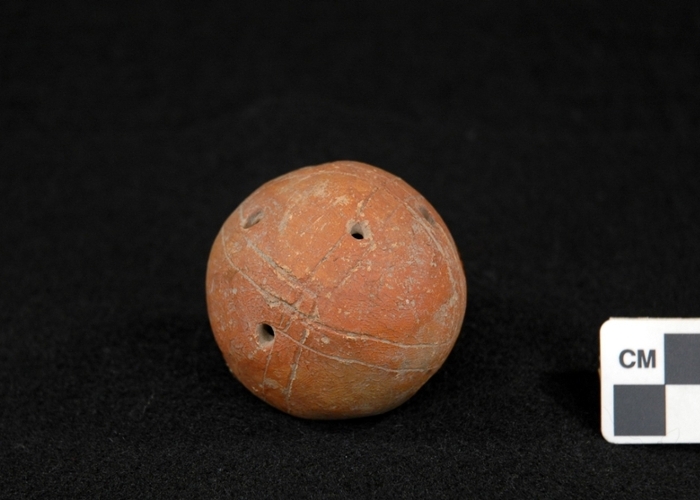
Rattle
1912.2333.1
Probably Tepanec or Mexica (Aztec)
ca. 1200-1521 CE
This spherical clay rattle is nearly identical to examples held by the Metropolitan Museum of Art and the American Museum of Natural History. It likely dates to the Late Postclassic Period, ca. 1200-1521 CE.
According to written sources, the Tepanecs took over Azcapotzalco at the beginning of this period, ruling the surrounding region until their leader was overthrown in the early 15th century by an alliance of Aztec city-states. Archaeologically, Niven and his contemporaries did not distinguish between these groups. The uppermost levels are referred to only as "Aztec" or "Nahua," the terms being used broadly to describe the types of material culture produced by the various Nahuatl-speaking groups - including the Tepanec, Mexica and Alcohua - who controlled the Valley of Mexico prior to European conquest. -
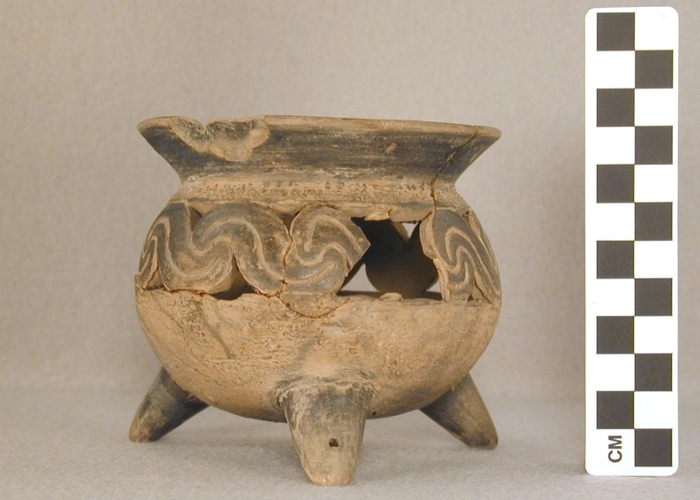
Incense Burner
1912.2313.1
Unattributed
Prior to 1521 CEThis small vessel, with its openwork scrolls and conical tripod supports, may have been used for burning fragrant copal, incense made from tree resin. Incense burners were made in a variety of forms throughout Mesoamerica, from simple stone bowls to elaborate terracotta sculptures. Another version of this vessel type, more commonly associated with the Oaxaca region, has two short supports and one long one that doubles as a handle.
-
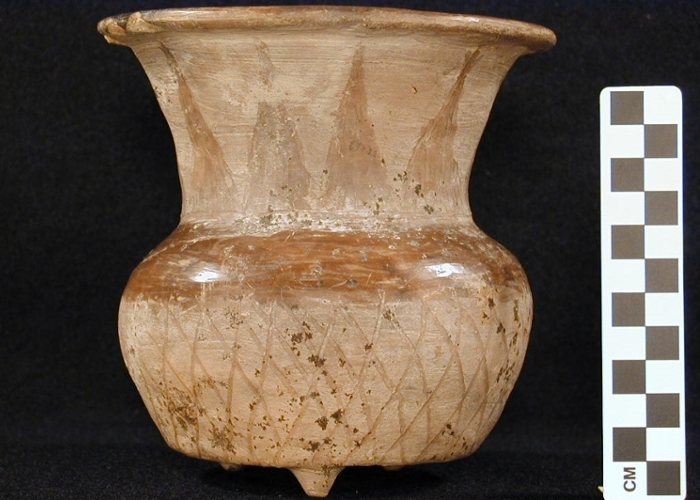
Jar
1912.2294.1
Unattributed
Possibly ca. 300-600 CE
The glossy designs on this jar were created by a technique called burnishing, which involves rubbing the surface of the clay with a smooth stone or other similar tool. This is done prior to firing, when the vessel is nearly dry. Burnishing compacts the surface particles and forces them into alignment. After firing, these areas appear glossy, while the unburnished areas remain matte.
Similar pottery from other sites has been dated to the Early Classic Period, ca. 300-600 CE. Though the ethnic identity of the people living in the Azcapotzalco region at this time is unclear, they were likely associated with or influenced by the nearby city of Teotihuacan, then in its heyday.